Abstract
Immature seeds of apricot (Prunus armeniaca L.) were fed the native gibberellin A5 (GA5) as 1- and 1,2-[3H]GA5 (5.3 Curies per millimole to 16 milliCuries per millimole) at doses (42 nanograms to 10.6 micrograms per seed) 2 to 530 times the expected endogenous level. After 4 days of incubation, seeds were extracted and free [3H]GA-like metabolites were separated from the highly H2O-soluble [3H]metabolites. For high specific activity feeds the retention times (Rts) of radioactive peaks were compared with Rts of authentic GAs on sequential gradient-eluted → isocratic eluted reversed-phase C18 high performance liquid chromatography (HPLC) -radiocounting (RC). From high substrate feeds (530 and 230 × expected endogenous levels) HPLC-RC peak groupings were subjected to capillary gas chromatography-selected ion monitoring (GC-SIM), usually six characteristic ions. The major free GA metabolites of [3H] GA5 were identified as GA1, GA3, and GA6 by GC-SIM. The major highly water soluble metabolite of [3H]GA5 at all levels of substrate GA5 had chromatographic characteristics similar to authentic GA1-glucosyl ester. Expressed as a percentage of recovered radioactivity, low substrate [3H]GA5 feeds (2 × expected endogenous level) yielded a broad spectrum of metabolites eluting at the Rts where GA1, GA3, GA5 methyl ester, GA6, GA22, GA29 (17, 14, 1.6, 7, 1.1, 0.5%, respectively) and GA glucosyl conjugates of GA1, GA3, GA5, and GA8 (33, 11, 1, 0.1%, respectively) elute. Metabolites were also present at Rts where GA glucosyl conjugates of GA6 and GA29 would be expected to elute (8 and 0.1%, respectively). Only 5% of the radioactivity remained as GA5. Increasing substrate GA5 levels increased the proportion of metabolites with HPLC Rts similar to GA1, GA6, and especially GA1 glucosyl ester, primarily at the expense of metabolites with HPLC Rts similar to GA3, GA3-glucosyl ester, and a postulated conjugate of GA6. There was evidence that high doses of substrate GA5 induced new metabolites which often, but not always, differed from GA1, GA3, and GA6 in HPLC Rt. These same metabolites, when analyzed by GC-SIM yielded m/e ions the same as the M+ and other characteristic m/e ions of the above GAs, albeit at differing GC Rt and relative intensities.
Full text
PDF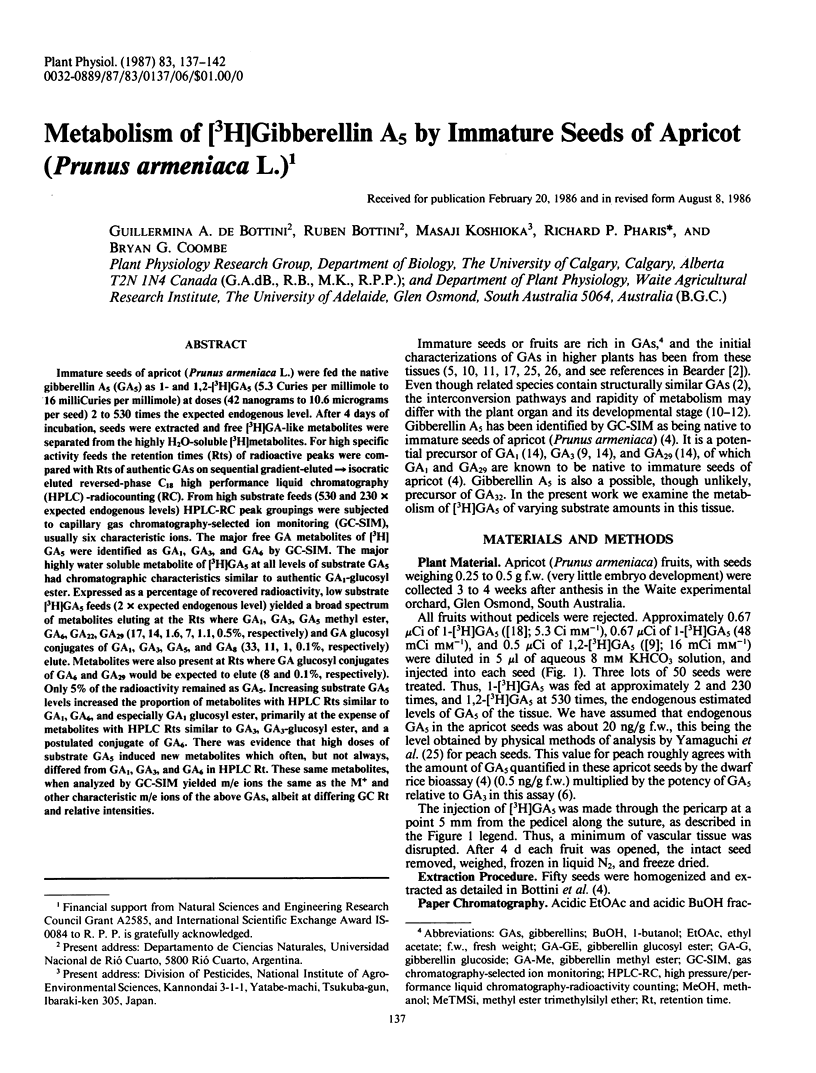
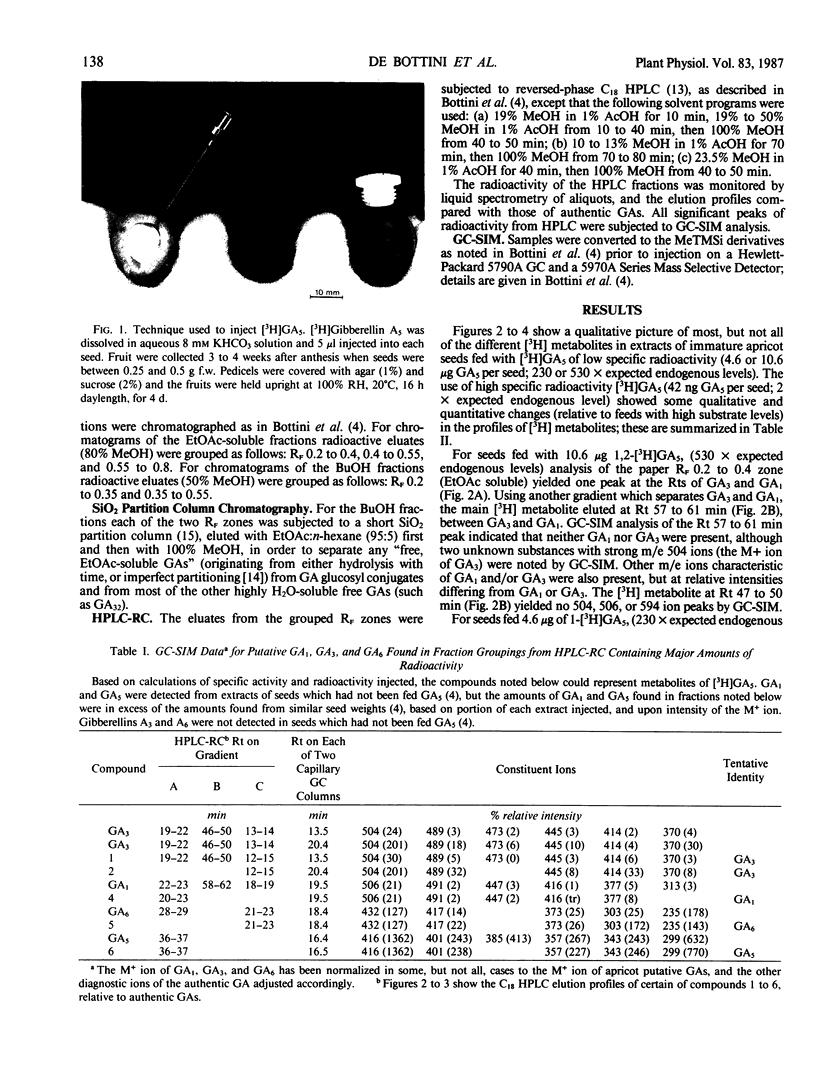
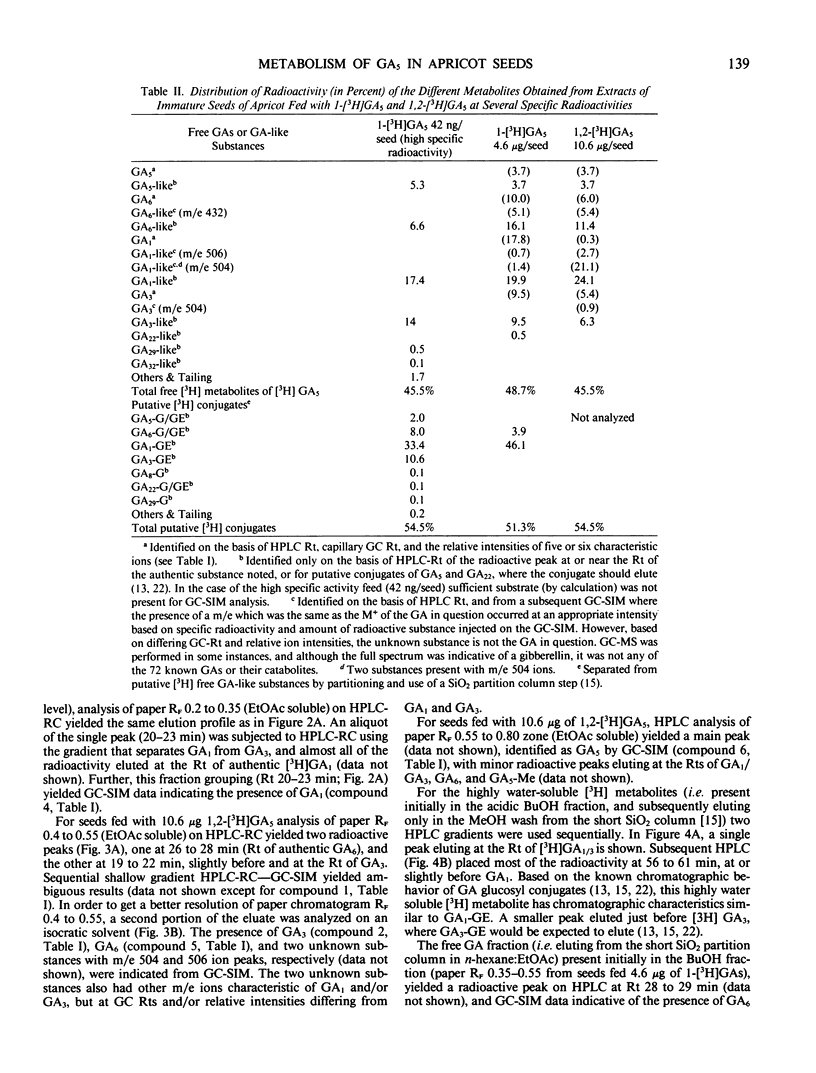
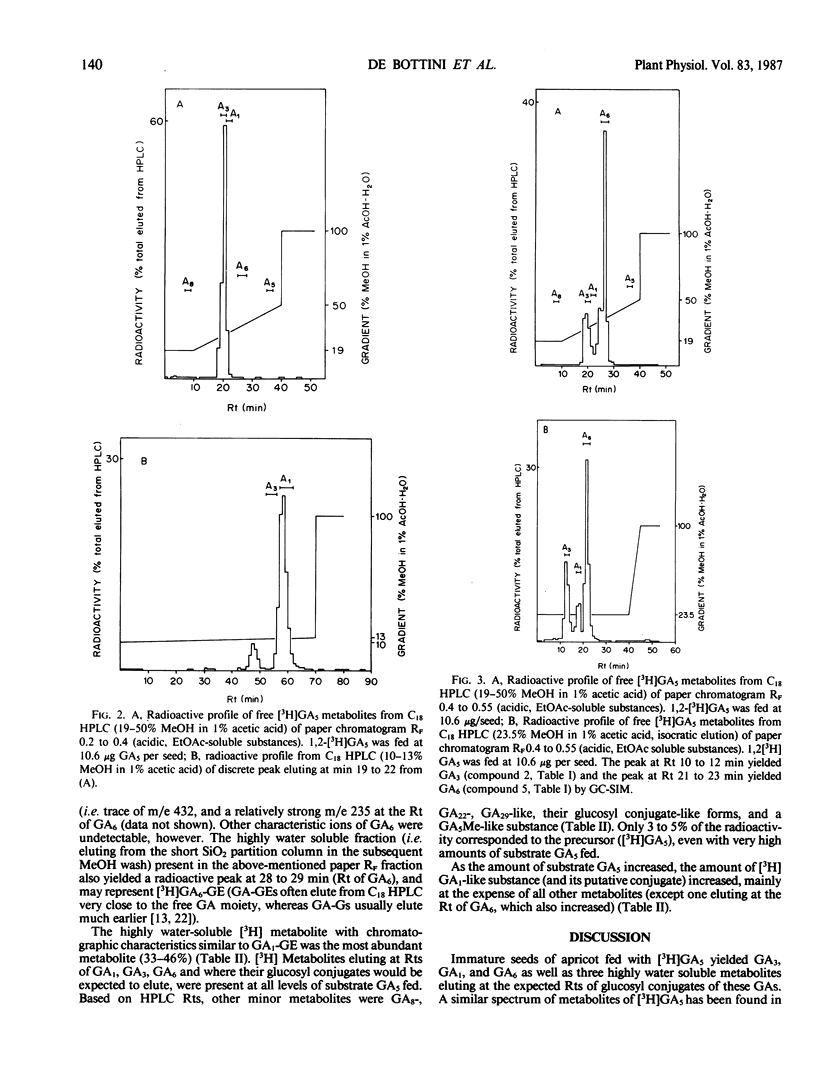
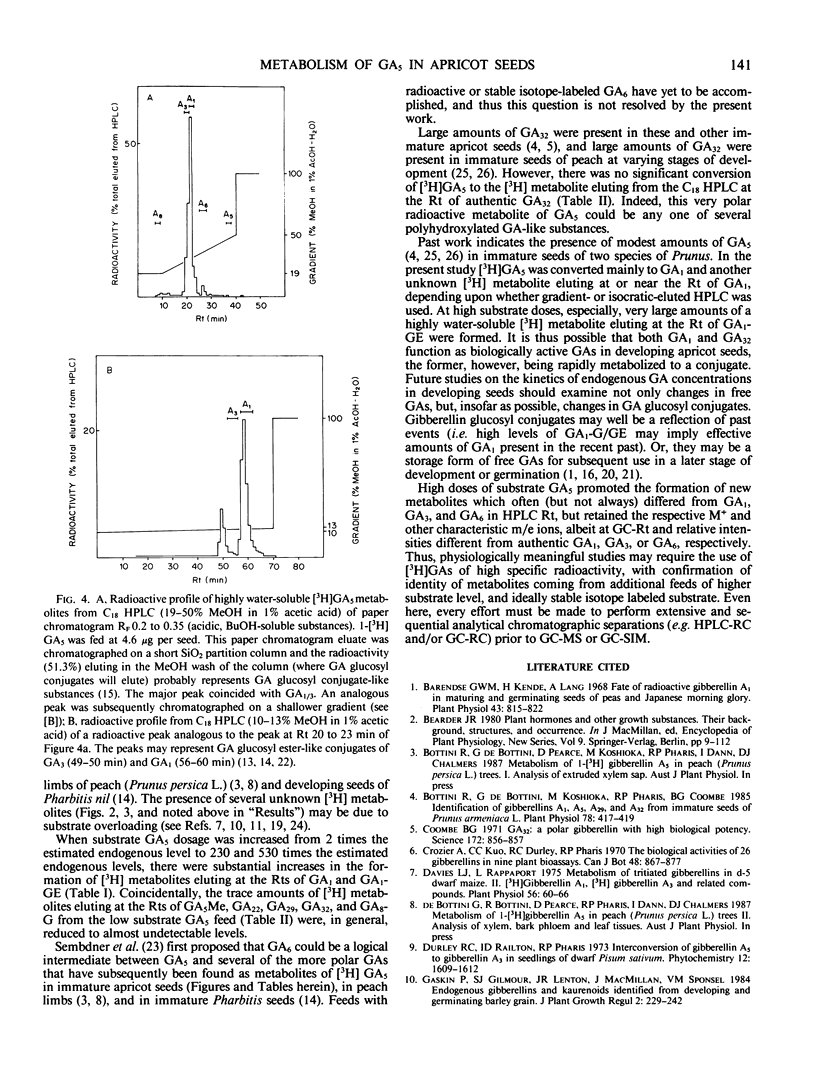
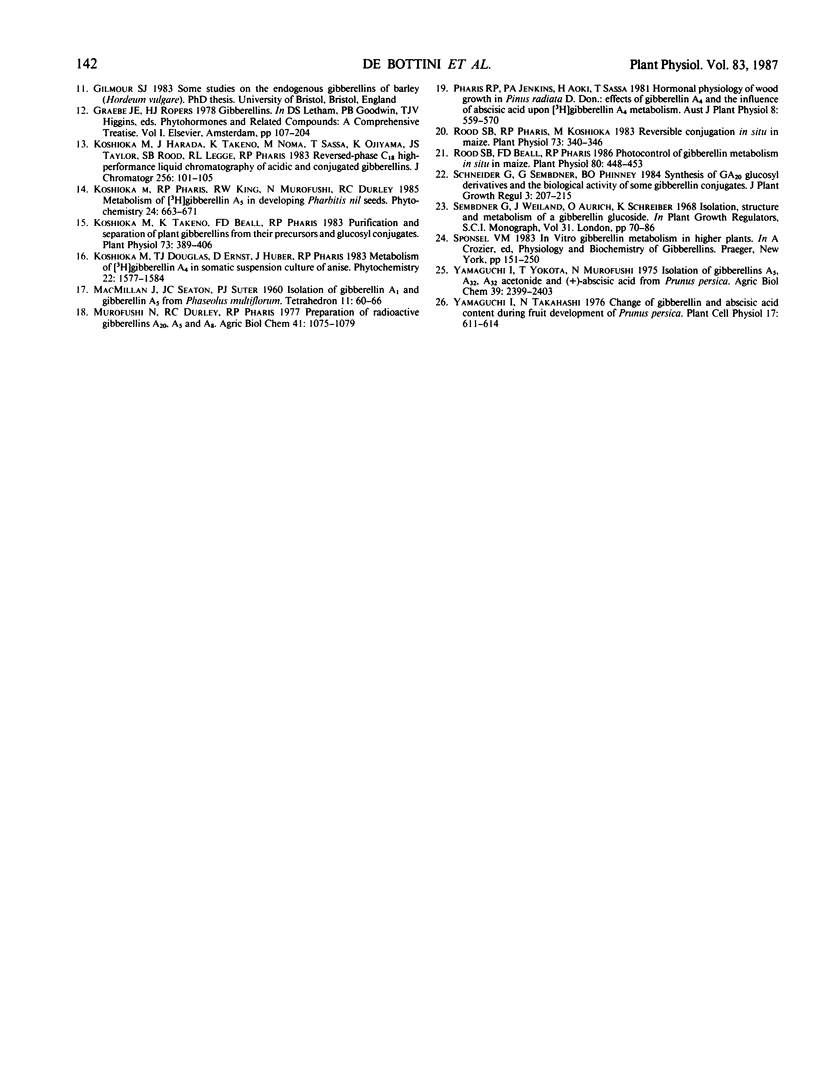
Images in this article
Selected References
These references are in PubMed. This may not be the complete list of references from this article.
- Barendse G. W., Kende H., Lang A. Fate of radioactive gibberellin a(1) in maturing and germinating seeds of peas and Japanese morning glory. Plant Physiol. 1968 May;43(5):815–822. doi: 10.1104/pp.43.5.815. [DOI] [PMC free article] [PubMed] [Google Scholar]
- Bottini R., de Bottini G., Koshioka M., Pharis R. P., Coombe B. G. Identification of Gibberellins A(1), A(5), A(29), and A(32) from Immature Seeds of Apricot (Prunus armeniaca L.). Plant Physiol. 1985 Jun;78(2):417–419. doi: 10.1104/pp.78.2.417. [DOI] [PMC free article] [PubMed] [Google Scholar]
- Coombe B. G. GA32: A Polar Gibberellin with High Biological Potency. Science. 1971 May 21;172(3985):856–857. doi: 10.1126/science.172.3985.856. [DOI] [PubMed] [Google Scholar]
- Davies L. J., Rappaport L. Metabolism of Tritiated Gibberellins in d-5 Dward Maize: II. [H]Gibberellin A(1), [H]Gibberellin A(3), and Related Compounds. Plant Physiol. 1975 Jul;56(1):60–66. doi: 10.1104/pp.56.1.60. [DOI] [PMC free article] [PubMed] [Google Scholar]
- Koshioka M., Takeno K., Beall F. D., Pharis R. P. Purification and separation of plant gibberellins from their precursors and glucosyl conjugates. Plant Physiol. 1983 Oct;73(2):398–406. doi: 10.1104/pp.73.2.398. [DOI] [PMC free article] [PubMed] [Google Scholar]
- Rood S. B., Beall F. D., Pharis R. P. Photocontrol of gibberellin metabolism in situ in maize. Plant Physiol. 1986 Feb;80(2):448–453. doi: 10.1104/pp.80.2.448. [DOI] [PMC free article] [PubMed] [Google Scholar]
- Rood S. B., Pharis R. P., Koshioka M. Reversible conjugation of gibberellins in situ in maize. Plant Physiol. 1983 Oct;73(2):340–346. doi: 10.1104/pp.73.2.340. [DOI] [PMC free article] [PubMed] [Google Scholar]



